Andrew K. C. Wong
Cohort Characteristics and Factors Associated with Cannabis Use among Adolescents in Canada Using Pattern Discovery and Disentanglement Method
Sep 03, 2021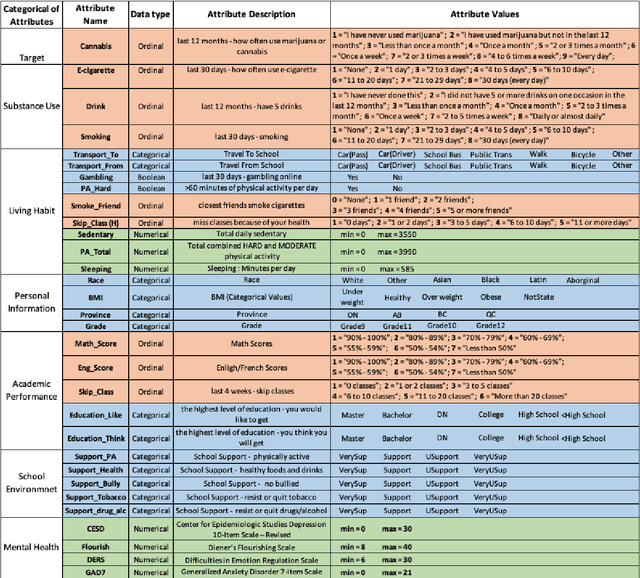
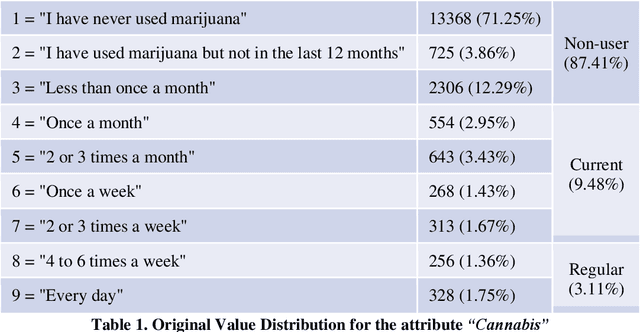

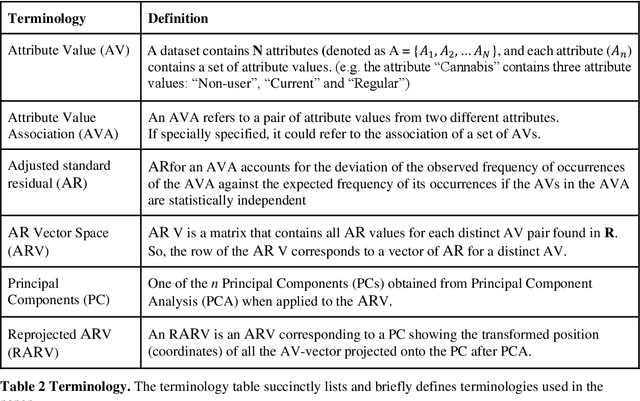
Abstract:COMPASS is a longitudinal, prospective cohort study collecting data annually from students attending high school in jurisdictions across Canada. We aimed to discover significant frequent/rare associations of behavioral factors among Canadian adolescents related to cannabis use. We use a subset of COMPASS dataset which contains 18,761 records of students in grades 9 to 12 with 31 selected features (attributes) involving various characteristics, from living habits to academic performance. We then used the Pattern Discovery and Disentanglement (PDD) algorithm that we have developed to detect strong and rare (yet statistically significant) associations from the dataset. PDD used the criteria derived from disentangled statistical spaces (known as Re-projected Adjusted-Standardized Residual Vector Spaces, notated as RARV). It outperformed methods using other criteria (i.e. support and confidence) popular as reported in the literature. Association results showed that PDD can discover: i) a smaller set of succinct significant associations in clusters; ii) frequent and rare, yet significant, patterns supported by population health relevant study; iii) patterns from a dataset with extremely imbalanced groups (majority class: minority class = 88.3%: 11.7%).
Binary Codes for Tagging X-Ray Images via Deep De-Noising Autoencoders
Apr 24, 2016
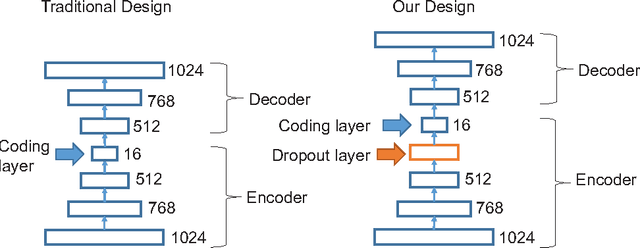
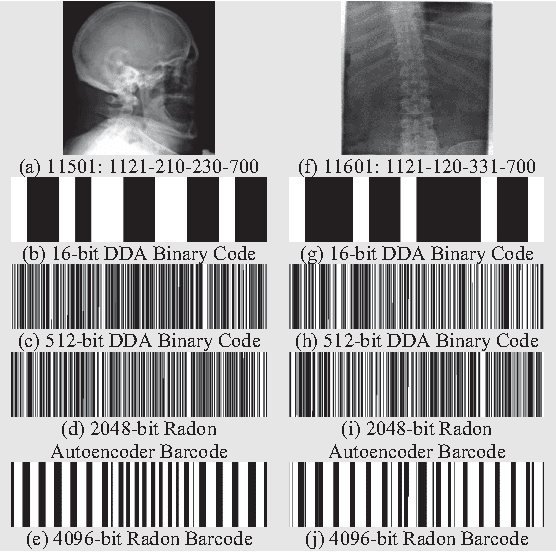
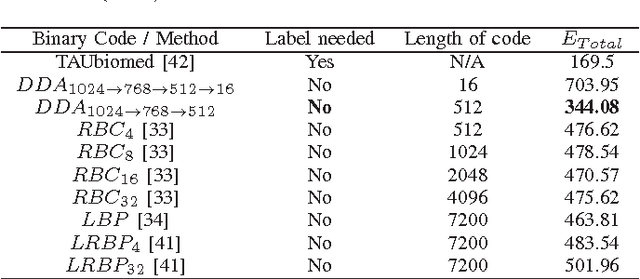
Abstract:A Content-Based Image Retrieval (CBIR) system which identifies similar medical images based on a query image can assist clinicians for more accurate diagnosis. The recent CBIR research trend favors the construction and use of binary codes to represent images. Deep architectures could learn the non-linear relationship among image pixels adaptively, allowing the automatic learning of high-level features from raw pixels. However, most of them require class labels, which are expensive to obtain, particularly for medical images. The methods which do not need class labels utilize a deep autoencoder for binary hashing, but the code construction involves a specific training algorithm and an ad-hoc regularization technique. In this study, we explored using a deep de-noising autoencoder (DDA), with a new unsupervised training scheme using only backpropagation and dropout, to hash images into binary codes. We conducted experiments on more than 14,000 x-ray images. By using class labels only for evaluating the retrieval results, we constructed a 16-bit DDA and a 512-bit DDA independently. Comparing to other unsupervised methods, we succeeded to obtain the lowest total error by using the 512-bit codes for retrieval via exhaustive search, and speed up 9.27 times with the use of the 16-bit codes while keeping a comparable total error. We found that our new training scheme could reduce the total retrieval error significantly by 21.9%. To further boost the image retrieval performance, we developed Radon Autoencoder Barcode (RABC) which are learned from the Radon projections of images using a de-noising autoencoder. Experimental results demonstrated its superior performance in retrieval when it was combined with DDA binary codes.
 Add to Chrome
Add to Chrome Add to Firefox
Add to Firefox Add to Edge
Add to Edge